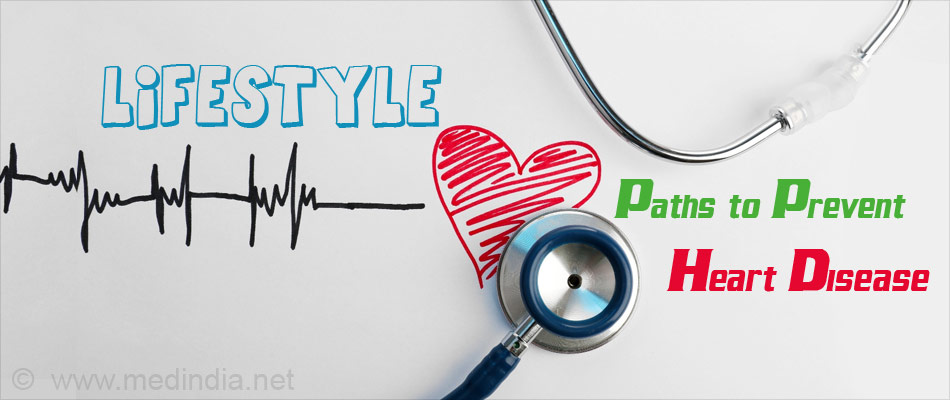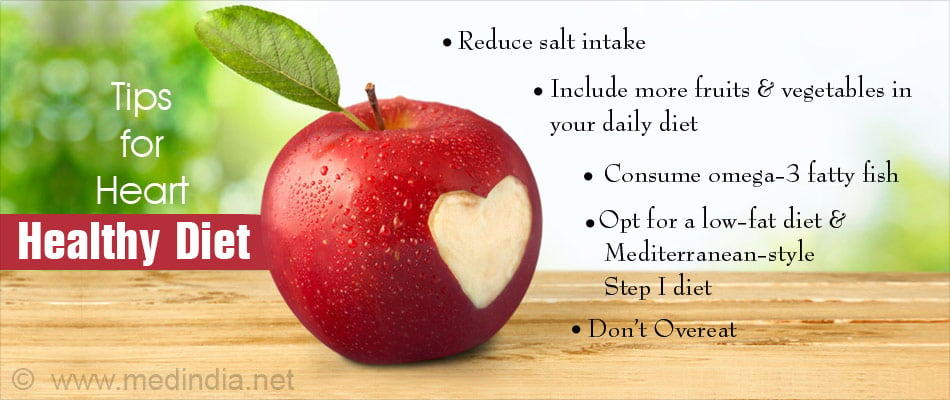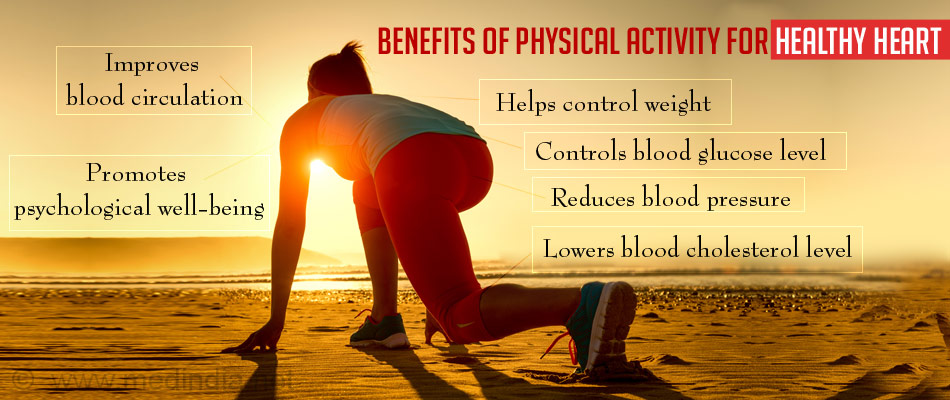Lifestyle Changes for Heart Disease Prevention
Lifestyle choices such as poor diet, lack of exercise, smoking and excessive drinking are lifestyle paths to heart disease. Switching over to good lifestyle habits helps the heart.
Our heart is not just a pumping machine – it’s a living organ consisting of millions of organized cells functioning to deliver blood to the organs of the body. The blood carries oxygen and nutrients necessary for the optimal functioning of the body including the heart itself. The heart beats around 70 times per minute on an average, pumping about 2,000 gallons of blood per day.
Heart diseases, medically termed as cardiovascular diseases, encompasses various conditions affecting the heart muscle, arteries, valves, lining or electrical system. The more common types of heart disease associated with lifestyle choices are:

- Coronary heart disease – Equated with coronary artery disease (CAD), it refers to the tendency to form plaque in the arteries (atherosclerosis). CAD can cause chest pressure and shortness of breath resulting in pain (Angina). This is the leading cause of myocardial infarction, simply known as, ‘heart attack’.
- Dilated cardiomyopathy – It is a disease where the heart muscle becomes weak and the heart chambers dilate releasing more blood with each beat. Excessive alcohol intake and high blood pressure contribute significantly to this disease.
- Myocardial ischemia – In this disease, the blood supply to the muscular wall of the heart decreases, causing the heart muscles to function improperly due to low oxygen levels. Angina is a symptom of myocardial ischemia. A Danish study found that high blood pressure, BMI of more than 27, diabetes and smoking were the potential risk factors for this disease.
- Hypertensive heart disease – Hypertensive heart disease occurs because of high blood pressure. The heart has to work harder to pump against the increased pressure in blood vessels. This causes the muscle to thicken and may lead to angina, arrhythmia, heart attack, stroke or sudden death.
- Cardiac arrhythmia – Arrhythmia is the result of malfunction or disruption in the timing of heart beats. The heart beats either too quickly, or too slowly, or irregularly. According to the American Heart Association about 780,000 people seek medical attention each year for cardiac arrhythmia.
Do women get heart disease? Of course they do. Both, men and women are affected by heart disease. Men, however, tend to develop the disease earlier than women. This may be due to the protective effect of estrogen abundantly present in women. But the fact remains that heart disease is the number one killer worldwide for women. A report from the 2010 World Congress of Cardiology in Beijing reveals that heart disease kills more women than cancers, AIDS, tuberculosis and malaria put together, and eighty percent of heart disease deaths in women occur in developing countries.
You may wonder what connection getting heart disease has with your lifestyle. An important INTERHEART study conducted in 52 countries identified nine high risk factors for heart disease, especially heart attack. These risk factors include smoking, cholesterol, high blood pressure, diabetes, obesity, diet, physical activity, alcohol consumption and psychosocial factors. Needless to say, all of these risk factors are associated with lifestyle choices. They found that 95 percent of heart disease is completely preventable through lifestyle changes.
Not only is heart disease preventable through lifestyle changes but it can also be reversed. A randomized, controlled trial from California suggests that comprehensive lifestyle changes may be able to reverse coronary heart disease after only one year without the use of lipid-lowering drugs.
Lifestyle changes such as changing over to good diet, abstinence from smoking, and exercising is definitely worth the effort especially in comparison to having a by-pass surgery.
Oxidative Stress – Precursor to Heart Disease
We’ll get to know why switching to good lifestyle habits are important to prevent heart disease if we know the underlying causes.
Scientists are now very clear that reactive oxygen species (ROS), that include free radicals and peroxides, are involved in heart disease. These free radicals are by-products of many biochemical and physiological processes in our body. They interact with other molecules and cause oxidative damage to cells.
“Oxidative stress” is a term for imbalance between the production of free radicals and the body’s ability to detoxify these radicals or repair the resulting damage by producing anti-oxidants. In other words, oxidative stress results when there is an overload of free radicals in the body and not enough anti-oxidants to counter them. These free radicals oxidize low density lipoproteins (LDL) which then damage the walls of the artery. Oxidative stress is one of the factors responsible for the development of atherosclerosis and other heart disease.
Studies have shown that enzymes containing essential minerals viz. selenium, copper, manganese and zinc fight free radicals thus decreasing their concentration. So, if our diet cannot supply these minerals adequately, enzymatic defenses against free radicals may be impaired and overload of free radical occurs.
Oxidation of LDL cholesterol is believed to occur at the initial stages of atherosclerosis. Vitamin E, the principal anti-oxidant in the body, has been shown to inhibit this oxidation. Similarly, studies show that Vitamin E intake lowers risk of angina and other heart disease.
The role of oxidative stress and consequent expression of oxidative damage has been demonstrated in many research studies. It may be interesting to note that although a number of studies have validated the protective role of anti-oxidants, clinical trials have failed to prove the efficacy of anti-oxidants in the treatment of cardiovascular disease.
Unfortunately, there is no test available to measure the level of oxidative stress in our body, but lifestyle choices – being overweight, diet poor in nutrition, smoking, physical inactivity, pollution and modern day stress – raise the risk of oxidative stress.

Obesity and Heart Disease
Obesity is nothing but too much body fat, and this is directly responsible for diabetes and heart disease.
The WHO World Health Report, 2003, estimated that globally more than one billion adults are overweight and over 300 million adults worldwide are obese with the U.S. leading the table with 22.3 percent of obese population.
Obesity is nothing but too much body fat. Excess fat raises bad (LDL) cholesterol and lowers good (HDL) cholesterol. HDL cholesterol reduces the risk of heart disease, so lower the HDL greater the risk. Again, obesity can induce diabetes. And we all know that people with diabetes have a greater risk of developing heart disease.
Body Mass Index (BMI) is an index used to classify underweight, overweight and obesity in adults. BMI is calculated as the weight in kilograms (kg) divided by the square of the height in meters (m).
BMI = X kg/ (Y m)2
According to the World Health Organization (WHO), a person is classified as -
- Obese class I -when the BMI is 30.00 to 34.99
- Obese class II -when the BMI is 35.00 to 39.99
- Obese class III- when the BMI is equal or greater than 40
The WHO also noted that substantial proportion of Asian people with a BMI varying from 22 to 25 is at high risk for type-2 diabetes and cardiovascular disease.
Although 30 to 70 percent of obesity cases is heredity, diets high in fat and reduced energy expenditure is responsible for the increasing prevalence of obesity in the world. You tend to become obese if you take in more calories than your body requires or consume too much of saturated fat, trans-fat and cholesterol thereby increasing your blood cholesterol levels. Lack of regular physical exercise or a sedentary lifestyle also contributes significantly to obesity.
Here’s a fact sheet from the American Heart Association:
- Middle aged women with a BMI of more than 23 but less than 25 had a 50 percent increase in risk of coronary heart disease.
- Men aged 40 to 65 with a BMI of more than 25 but less than 29 had a 72 percent increased risk of CAD
- Hypertension or high blood pressure is approximately three times more common in obese than normal-weight people.
- Dilated cardiomyopathy may be the most common cause of sudden death in patients with severe obesity.
- The American Heart Association further suggests restricting consumption of fat to less than 30 percent of total calories to promote weight reduction in obese people. If you need to lose weight fast, a calorific deficit of 800 calories per day will be required. For less urgent weight reduction, a calorific deficit of 400 calories per day will be sufficient to lose 0.45 kg per week. It’s a tough call but worth a try.
The INTERHEART study, on the other hand, found that abdominal obesity is a stronger risk factor than BMI suggesting that abdominal obesity should be the indicator of obesity.

Diet and Nutrition
A sensible and balanced diet can reduce the risk of heart disease.
Obesity and overweight are directly linked to diet and nutrition. While it’s true that genes are important in determining our susceptibility to weight gain, our lifestyle is the primary culprit.
As incomes are rising worldwide, nutritious and balanced diet is giving way to a diet with high levels of fats and sugars. The diet thus becomes highly imbalanced. Poor diet leads to oxidative stress in the body. Oxidative stress in combination with lack of exercise and bad habits such as smoking causes heart disease.
Opting for a healthy diet can reduce your chances of developing heart disease and even protect your heart from further progression of the condition. So, it’s actually never too late to start on a healthy diet.
Here are some tips for a heart-healthy diet:
- Reduce salt intake. Excessive salt may lead to high blood pressure which is bad for heart. Herbs and spices have natural salt in them, so adding these will reduce the requirement of added salt.
- Eat at least five portions of fruits and vegetables per day.
- Eat moderate amount of fish, lean meats, skinless poultry and dairy products. Researchers found that modest consumption of fish (1-2 servings/week) that are high in n-3 fatty acids (EPA and DHA) reduce risk of heart disease death by 36 percent.
- Select diets that emphasize on fresh fruits and vegetables, nuts and whole grains. According to the Lyon Diet Heart Study, Mediterranean-style Step I diet may help reduce recurrent heart disease by 50-70 percent after an average follow-up of 46 months. Mediterranean-style Step I diet includes more bread, more root and green veggies, fish, fruit on daily basis, meats replaced with poultry, and butter replaced with margarine high in alpha-linolenic acid.
- Opt for a low-fat diet but go easy on refined carbohydrates. It is generally thought that dietary saturated fat is linked to cardiovascular disease and reducing saturated fat intake will mean lowering LDL-cholesterol concentrations. However, latest studies found no significant evidence for concluding that dietary saturated fat is associated with increased risk for heart disease. However, replacing saturated fat with polyunsaturated fat or monounsaturated fats has shown to lower LDL as well as HDL cholesterol in some studies. But it is certain that replacing saturated fat with higher carbohydrate intake, especially refined carbohydrate, will increase the risk for cardiovascular disease.
- Increase dietary intake of anti-oxidants. Anti-oxidants neutralize free radicals in the body and help curb oxidative stress. Anti-oxidant supplements are not a good idea. Studies have shown that supplements do not replicate the action of dietary anti-oxidants. So get those anti-oxidants from foods such as apricot, mango, citrus fruits, strawberries, papaya, melons, spinach, fenugreek leaves, broccoli leaves, carrot, pumpkin, sweet potato, tomato, sprouted pulses, germinated cereals, chicken liver, salmon, shrimp, sunflower oil, safflower oil, and peanut oil. This list is not exhaustive of course.
- Don’t overeat. Overloading your plate can lead to intake of more calories, fat and cholesterol. Keep track of how much you eat. Plan ahead and create daily menus.

Physical Inactivity and Lack of Exercise
Physical inactivity is the fourth leading risk factor for global mortality and contribute to six percent of deaths globally.
The World Health Organization data reveals that more than 60 percent of the world's population is not physically active enough to induce health benefits. The reason behind it seems to be the lifestyle choice.
We would prefer to watch television or play computer games during leisure time instead of participating in sports or taking a walk in the nature. Thanks to modern gadgets and tools, domestic activities and occupational activities do not require much of physical activity. Passive mode of transport is also to blame for the declining physical activity levels.
The fault is not always ours. Urbanization has resulted in environmental factors which may discourage physical activity. Population explosion, increased levels of crime, high density traffic in cities, air pollution, and lack of parks or greeneries, all contribute directly or indirectly toward physical inactivity.
According to the WHO, physical inactivity is the fourth leading risk factor for global mortality and contributes to six percent of deaths globally. Physical inactivity is estimated to be the main cause for approximately 30 percent of ischemic heart disease and 27 percent of diabetes burden.
Any bodily movement involving skeletal muscles, resulting in energy expenditure can be called physical activity. Physical activity does not mean just exercise, it also includes other activities such as walking, playing, dancing, cycling, house chores, and recreational activities.
Health benefits of physical activity are many.
- It helps control weight. (Remember excessive weight, obesity, heart disease?)
- It helps control blood glucose levels in a diabetic individual. Diabetics are at greater risk for cardiovascular disease.
- It reduces blood pressure in people with hypertension and delays or prevents development of high blood pressure.
- It can also lower blood cholesterol levels which in turn decrease the risk for heart disease.
- It helps improve blood circulation in the body and enables all organs (including heart) and muscles to work together more effectively.
- It helps promote psychological well-being.
- Higher levels of weekly physical activity can lower risk of 5 chronic conditions - Breast Cancer, Bowel (Colon) Cancer, Diabetes, Ischemic heart disease and Ischemic stroke.
Incidentally, you don't have to achieve a high fitness level to get health benefits. A University of British Columbia review study confirmed the findings that walking at least two hours a week could reduce premature death from heart disease by up to 50 percent. They believe that even small increases in physical fitness are associated with a significant reduction in cardiovascular risk.
The 2008 Physical Activity Guidelines for Americans Report recommends at least 150 minutes a week of moderate-intensity physical activity such as brisk walking, ballroom dancing or gardening for adults.
The Heart Foundation recommends that we find ways to incorporate physical activity into our daily living. They suggest at least 30 minutes of moderate physical activity every day to keep our heart healthy. The American Heart Association, on the other hand, recommends 30 to 60 minutes of aerobic exercise 3-4 times a week to promote heart health.
Aerobic exercise is recommended for improving HDL cholesterol and lowering LDL cholesterol as these are associated with cardiovascular disease. A meta-analysis of control trials revealed that aerobic exercise for > or = 8 weeks in men 18 years of age or older significantly improved HDL cholesterol and reduced total cholesterol and triglycerides level.
You may be surprised to know that yoga, too, has the potential to retard progression and increase regression of atherosclerosis and other heart disease. An AIIMS study from India conducted a randomized, controlled trial in which men with coronary artery disease (CAD) were given yoga intervention for one year. Results revealed that yoga groups had significant reduction in number of anginal episodes per week, had significantly more lesions regressed and showed other heart benefits including decrease in body weight. There were no side effects.
Another study by U.S. physical therapy researchers found that typical hatha yoga sessions represent low levels of physical activity, similar to walking on a treadmill at 3.2 kph, and they do not meet recommendations of physical activity for improving cardiovascular fitness. However, they found that yoga practice involving sun salutation (Suryanamaskar) exceeding the minimum bout of 10 minutes may actually improve cardio-respiratory fitness in sedentary individuals.
On the whole, any mode of physical activity is beneficial to heart health as long as you do it on a regular basis and enjoy doing it. The thing is to get physical!

Smoking and Alcohol Intake
Smoking is the single largest preventable cause of premature death due to disease. An estimated 40,000 people die from cardiovascular disease because of passive smoking.
Smoking is, perhaps, the most widespread addiction. The WHO statistics show that more than 15 billion cigarettes are sold daily. It is the single largest preventable cause of premature death due to disease. Smoking related diseases kill one in ten adults globally. Apart from causing lung cancer, it is a high risk factor in heart disease and stroke.
Smoking is the major cause of atherosclerosis. The poisons such as nicotine, carbon monoxide, and ‘tars’ present in the cigarette damage the cells lining the coronary arteries and other blood vessels, and build up deposits of fats and plaque in them. Smoking decreases oxygen supply to the heart and other tissues and increases blood pressure and heart rate leading to development of coronary artery disease and other heart disease. The INTERHEART study found that current smoking is the second strongest risk after blood cholesterol risk for acute myocardial infarction (AMI). They found that consumption of 1-5 cigarettes daily increased the risk for AMI by 38 percent.
The risk of heart attack increases with the number of cigarettes you smoke. The longer you smoke, higher the risk. And that’s not all! When you smoke, you put people around you to danger. They are also at risk for developing health problems. This is called passive smoking and the American Heart Association estimates that about 40,000 people die from cardiovascular disease because of passive smoking.
The bottom line is ‘Quit smoking before it’s too late’. Save your family and friends from getting heart disease because you are addicted to smoke. The good news is your heart starts getting better from the day you stop smoking.
Alcohol is yet another addiction that can cause you a lot of harm if you don’t stop on time. Although drinking alcohol, especially wine, in moderation is good for heart, excessive alcohol consumption works the other way round and causes heart disease. Three to five drinks per week has a protective effect for heart (reduce it to two per week if you are a woman), but you don’t have to start drinking to protect your heart. There are other safer ways to protect your health. On the flip side, excessive alcohol consumption can increase hypertension and lead to heart disease. A study found that the risk of hypertension increases linearly with alcohol consumption of 50 g/day for men and 5 g/day for women.
This is how heavy drinking can affect your heart –
- Heavy drinking raises the levels of triglycerides (type of fat) in the blood. High levels of triglycerides block the coronary artery and other blood vessels resulting in heart disease or stroke.
- According to the American Heart Association, alcohol damages the heart muscle and arteries and cause cardiomyopathy.
- Binge drinking increases risk of atrial fibrillation and cardiac arrhythmia resulting in cardiac arrest and stroke.
- Heavy drinking causes high blood pressure which in turn may cause stroke or heart failure.
- Alcohol may also react with medication and drugs causing serious side effects.
- Make the decision to quit alcohol and be committed to your decision if you are an alcoholic. Self help is the best help to begin with.

Anger and Stress – Risk Factors for Heart Disease
William Harvey, the English physician who first described how heart receives and expels blood during each circle, wrote in 1628, "every affection of the mind that is attended either with pain or pleasure, hope or fear, is the cause of an agitation whose influence extends to the heart”.
Three centuries later, two psychiatrists – Friedman and Rosenman – while examining the relationship between diet and heart disease found that some people were more susceptible to heart disease than others irrespective of their sex, age, or geographic location. On further analysis they pinned this down to social, cultural and behavioral attitudes, and opened up a new field of inquiry into the mind-heart connection.
Stress is one of the modules in the mind-heart connection. So, what is this stress? One way to define it would be “the state in which individuals are faced with the need to make difficult or undesirable changes in order to adapt to events and situations in their lives”. Anger, frustration, depression, anxiety, fear, panic attacks, over-reaction to events, work-related stress, are all emotional indicators of stress.
The Framingham study on the relationship of psychosocial factors to coronary heart disease (CHD) showed that prevalence of CHD was significantly higher among middle-aged and older women who showed aging worries, tension, and anger symptoms. Similarly, among men under 65 years, aging worries, daily stress and tension were associated with prevalence of myocardial infarction (MI). Then again, a review of studies on stress and coronary heart disease by Expert Working Group of the National Heart Foundation of Australia concluded that although there was strong and consistent evidence on association between depression, anger, and social isolation and the causes of CHD, there was no consistent evidence for association between work related stressors and panic disorders and CHD.
How does stress cause heart disease? When you are in a stressful event, physiological changes occur to meet the associated demands in the body. A ‘fight –or- flight’ response occurs automatically in this situation and the pituitary gland at the base of the skull releases the hormone adrenocorticotropin (ACTH) which stimulates the production of cortisol (stress hormone) and adrenaline-like substances by the adrenal glands. The heartbeat quickens, i.e., the heart pumps harder and faster and the blood pressure rises as well. Fats are transformed into fatty acids which then are delivered to the muscles along with the hormones.
The fatty acids are supposed to ‘burn up’ and supply fuel in response to the challenging physical demand. But if the stress is mental, the hormones and fats that are mobilized for action are not used up. The high heart rate and high blood pressure increase the turbulence in the bloodstream and may damage the cell linings of the arteries. To promote healing, blood platelets adhere to the injured walls and further thicken the arterial walls. The thickened arteries attract LDL cholesterol and over time this process speeds up atherosclerosis in the coronary arteries.
The thickening of the coronary artery grows and significantly reduces the blood flow which then is not sufficient enough to support the pumping of the heart. This causes myocardial ischemia (MI). If the blockage in the coronary arteries is too severe, the mobilized stress hormones close it off further resulting in heart attack.
All is not lost, however. Just as fats, smoking, and alcoholism are modifiable risk factors, so is stress. A number of activities can have beneficial effect on stress.
- Aerobic exercise reduces the level of stress-related hormones circulated in the blood.
- Brisk walking may help ‘burn’ off the excess hormones produced during stress.
- Relaxation techniques, yoga, meditation, and Tai-Chi, if practiced regularly, help reduce the occurrence of stress.
- Group therapy is useful for people who have had traumatic experiences or are bereaved.
- Biofeedback, anger management training, and stress management therapy are other programs that help deal with anger and stress.
- Laughter relieves anger, tension and hostility by over 80% and cuts heart attack risk by over 70%.
- Take care of your stress, take care of your heart!

Oral Health and Heart Disease
Periodontal disease is a risk factor for heart disease. Periodontitis a severe gum infection damages the tissues and bones that support the teeth.
Sore and swollen gums are the main signs of bacterial infection in the mouth. Inflammation caused by the periodontal disease increases the risk of heart diseases. Periodontitis can also exacerbate existing heart conditions.
Maintaining good oral hygiene may help in the prevention of heart disease.
Tips for Good Oral Health:
- Brush the teeth twice daily to remove plaque.
- Replace the old toothbrush every three months once.
- Do not brush teeth right after meals, but after half an hour or so, as the loosened enamel could break leading to gum problems.
- A healthy diet is necessary for good dental health. Include vegetables, celery, apples which are good for your teeth.
- Regular dental checkups may promote good oral health.








